Find an Orthopedic Physician
Why Is My Ankle Hurting?
Injuries, infection, chronic medical conditions and even wearing shoes that are too tight can be the source of ankle pain. Depending on the cause, the pain may feel like a sharp, tingling, shooting pain or a dull ache on the inside or surrounding areas of your ankle.
Ankle pain is so common that it affects people of all ages and can sometimes send people to the hospital. Here are common symptoms of conditions that can make your ankles hurt as well as some helpful tips to manage your pain.
What Can Cause Ankle Pain?
- Sprain - a common cause of ankle pain that occurs when the ligaments that connect the bones in the ankle stretch beyond their limits and tear. Symptoms include pain, swelling and bruising. Most sprains can be treated with rest and ice at home.
- Fracture - when there is a break of one or more of the bones in the ankle. Symptoms include sudden sharp pain that can radiate throughout the lower leg, swelling, a popping or snapping sound during the injury and difficulty walking.
- Rheumatoid arthritis – a long-term, autoimmune disorder that causes inflammation in the joints and surrounding tissue. Symptoms include morning stiffness that can last for more than one hour, pain and swelling. Rheumatoid arthritis can get worse over time. Medication may help with relief.
- Osteoarthritis - the most common joint disorder due to aging and natural wear and tear. When the protective cartilage in the ankles breaks and wears down, it causes the bones to rub against each other, leading to pain and instability. Symptoms include growth of bony areas over the ankle joint, stiffness and swelling. The pain tends to get worse after exercise or when you put pressure on the joint.
- Gout – a type of arthritis that occurs when uric acid crystals form in the joint and cause painful inflammation in the foot, ankle or a person’s big toe. Symptoms include pain that is usually worse at night or immediately upon waking up, swelling around the ankle and warmth over the ankle joint. A person with a family history of gout is more likely to have this condition.
- The pain stops you from doing normal activities
- The pain gets worse or keeps coming back
- The pain has not improved after treating it at home for 2 weeks
- There is a tingling or loss of sensation in your foot
- You have diabetes and foot pain
What Is Best for Ankle Pain?
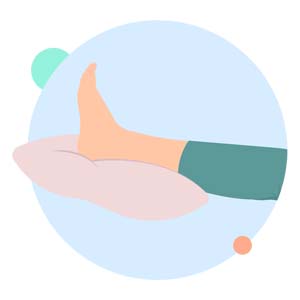 Rest and raise your ankle above the level of your heart when you can. |
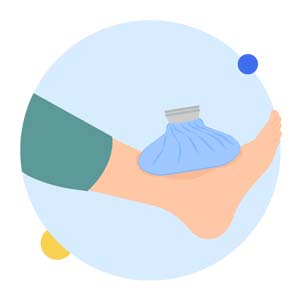 Put an ice pack wrapped in a towel on your ankle for up to 20 minutes every two to three hours. |
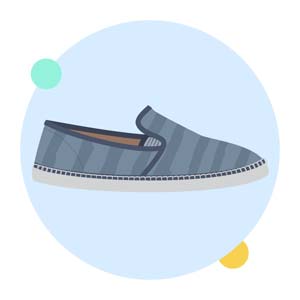 Wear wide comfortable shoes with a low heel and soft sole. |
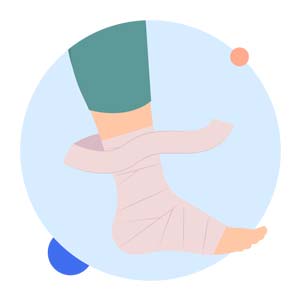 Wrap a bandage or put a brace around your ankle to support it. |
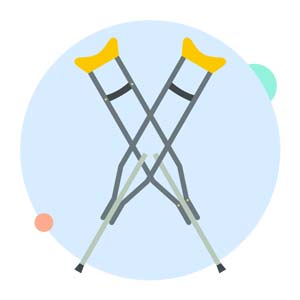 Use assistive tools, such as crutches or a cane to avoid putting much weight on your ankle. |
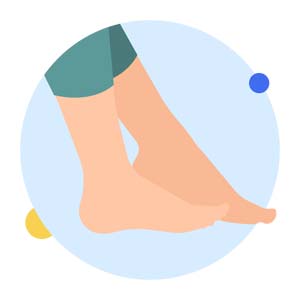 Try regular gentle stretching exercises. |
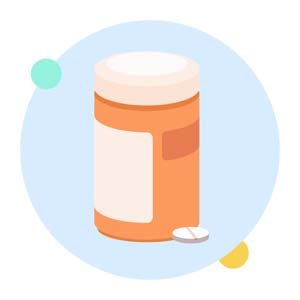 Take paracetamol for pain. Do no take ibuprofen for the first 48 hours after an injury. |
When to See A Doctor
Please seek emergency care if you continue to experience the following symptoms despite lifestyle modifications, home remedies and over-the-counter medications:
Our team of compassionate and experienced orthopedic doctors and staff are here to support you every step of the way. Schedule an appointment with us so we can help you find the right solution to your condition.
Sources:
MedlinePlus
American Academy of Orthopaedic Surgeons
National Health Services UK
Medical News Today

